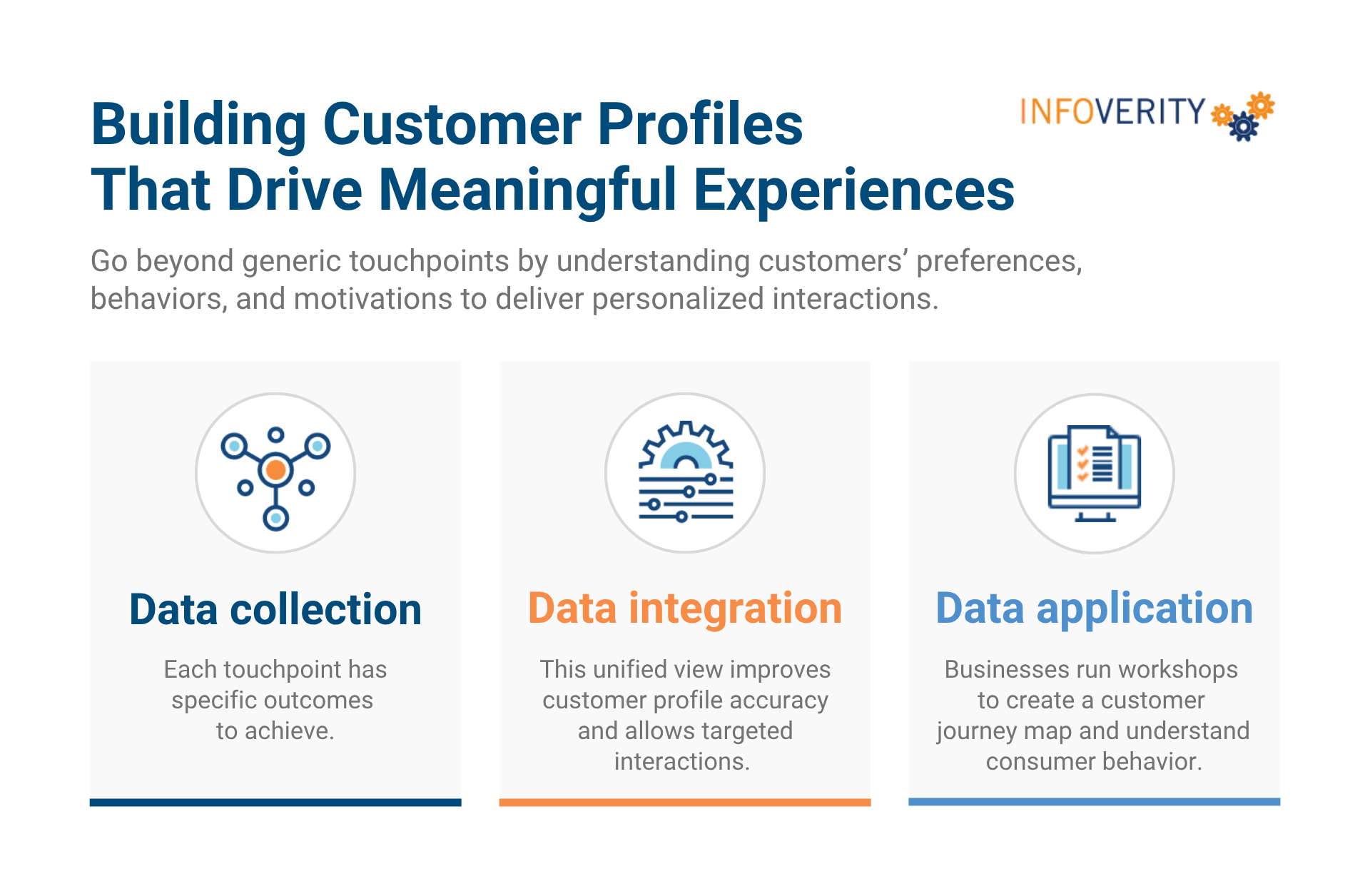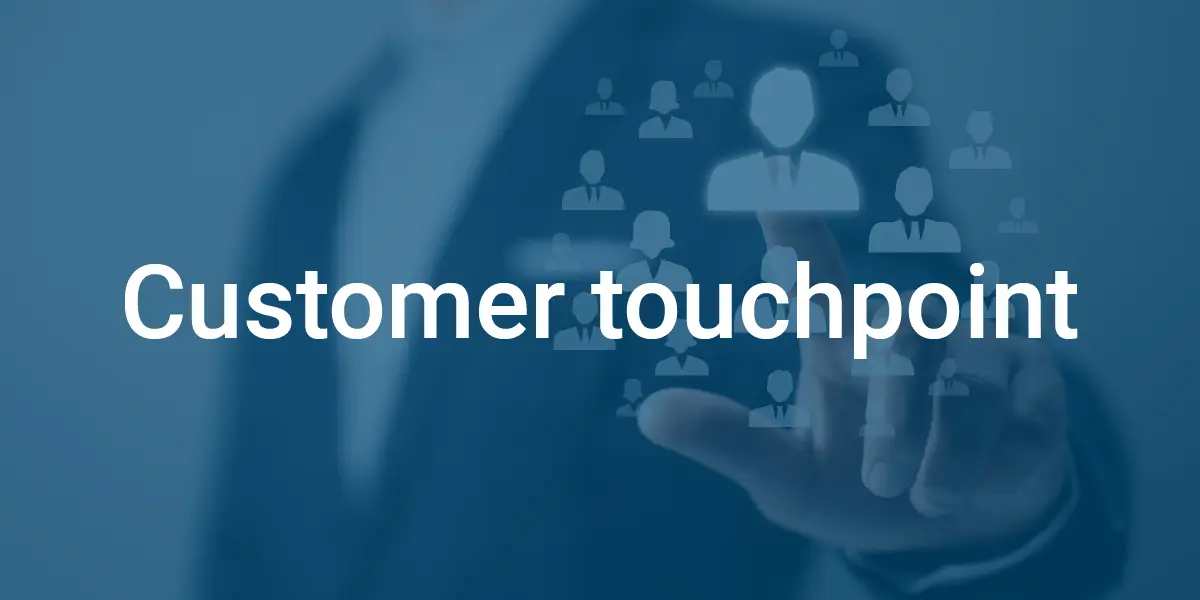The demand for personalized customer experiences is at an all-time high. 71% of consumers expect tailored customer touchpoint, and 76% feel let down when brands fail to deliver on that promise.
To meet such high expectations, modern businesses must collect and integrate fragmented customer information to build comprehensive profiles. They can avoid disconnection and minimize disappointment by understanding how consumers respond to every ad click, product search, or inquiry.
Customer touchpoints are important for boosting engagement. Read on to discover how they work and why they matter.


Customer Touchpoint : Table of Contents
What are Customer Touchpoints?
Customer touchpoints are brand-customer interactions from their first encounter to conversion and continuous engagement. Each touchpoint builds on the last.
For instance, in retail, a customer’s initial touchpoint with a brand is a compelling social media ad. The ad can capture and redirect this individual to the second touchpoint, a landing page. Following this, the landing page’s CTA could then prompt them to shop or subscribe to a newsletter. In any case, a follow-up email with personalized offers can help keep the engagement going.
Customers interact with the brand online and offline. Thus, physical and digital touchpoints exist.
Here’s how they differ based on stages of the customer journey in B2C:
Physical Touchpoints | Digital Touchpoints | |
Marketing | promotional events, brochures, direct mail | paid ads, social media posts, email newsletters, blog posts, TV commercials |
Product Experience | product demos, showrooms, trial campaigns | virtual product tours, online product demos |
Point of Sale | POS and product displays, in-store checkout | e-commerce checkout, digital product catalogs |
Feedback | store feedback forms, comment cards | post-delivery feedback surveys, review platforms |
Customer Support | service appointments, in-store consultations | contact centers, helpdesk tickets, chatbot interactions |
Community Engagement | pop-up events, workshops, charity drives | online forums, social media groups, webinars |
In B2B, on the other hand, customer touchpoints often involve more relationship-driven, trust-building interactions.
B2B purchasing decisions involve multiple individuals or departments. Each touchpoint must address the needs and concerns of all decision-makers. Examples include proof-of-concept meetings, industry roundtables, and conferences.
Indeed, identifying customer touchpoints is foundational to building a loyal customer base. Marketers can analyze interactions and gather data on what resonates most with specific customer demographics.
Understanding when and what resonates with individual customers enables brands to tailor strategies and drive long-term engagement.
Looking to improve customer experience?
Infoverity’s MDM and PIM systems help businesses break down data silos by consolidating datasets from diverse touchpoints. 
How Dynamic Customer Touchpoints Impact the Customer Journey
Customer journeys aren’t linear. Customers discover and experience brands through a variety of channels and touchpoints.
On Personalization
Effective touchpoints meet consumers where they are and present content that aligns with their interests. In fact, recent statistics indicate that 50% of organizations leverage customer data to achieve that level of personalization.
That’s why it’s important for modern enterprises to segment data to personalize experiences.
Thus, marketers can leverage demographic, behavioral, and psychographic data points to group target audiences and launch targeted campaigns.
Example
An e-commerce retailer distinguishes repeat buyers from occasional browsers. It then targets frequent shoppers with exclusive offers and entices first-time buyers with time-limited discounts.
On Timing
Personalization’s success is contingent on timing. The risk of ad fatigue looms large since 81% of customers would unsubscribe from brands that overwhelm them with excessive marketing communications.
So the other end of the equation is about delivering personalized content at the right time to sustain engagement.
Potential customers at the awareness stage (i.e., first-time brand encounters) may respond well to free trials. In contrast, existing customers may value loyalty rewards or targeted product recommendations more after their initial purchase.
Preparing customer profiles is a strategic step to maximize interactions across these dynamic touchpoints.
How to Create a Comprehensive Customer Profile
Generic touchpoints treat customers like faceless data points. In order to create meaningful experiences, today’s brands should work on understanding customers’ personalities, preferences, behaviors, and motivations.
Creating a detailed customer profiles for more personalized interactions consist of the following steps:

1. Data Collection
To make this work, companies need to have sufficient data. Richard Stocks, Chief Product Officer of Alertspeed, listed the data points marketers use to streamline this process.
- Websites and apps – clicks, page views, scroll depth, time spent on specific pages, downloads, search terms, abandoned cart items, device used, location
- Email marketing – open rates, click-through rates, link clicks, unsubscribes
- Social media – likes, shares, comments, mentions
- Paid advertising – impressions, clicks, conversions, cost-per-click
- Customer service – support tickets, resolution times, customer satisfaction surveys
- CRM systems – purchase history, product preferences, engagement history
- Loyalty programs – points earned, redemption history
- Surveys and feedback forms – direct responses to questions about preferences, needs, pain points
It’s essential to use data quality over quantity. Each touchpoint has specific outcomes to achieve. Organizations must only gather data that provides clear insights to meet those objectives.
2. Data Integration
Different departments use distinct software applications for their operations. In order to prevent data silos, companies integrate data from multiple sources using systems like Master Data Management (MDM). Enterprise platforms like Infoverity, SAP, and Oracle offer MDM solutions.
MDM helps maintain data accuracy, completeness, and consistency, lowering data management costs. Moreover, it centralizes customer information to create a consistent, accurate single source of truth. One good example is when a company consolidates a customer’s website browsing history with email campaign interactions and social media activity.
Once data is consolidated and duplicates are resolved, it only retains relevant customer attributes (a.k.a. survivorship). In fact, this unified view improves customer profile accuracy and allows for more targeted interactions.
3. Data Application
38% of businesses run workshops to create a customer journey map and understand consumer behavior. Synthesized customer profiles and integrated data simplifies this process. Website interactions and social media engagement, for instance, can reveal a customer’s current interests and pain points.
By visualizing these unique experiences, modern brands can identify where and why customers engage with their products and services. Moreover, they can anticipate challenges and discover opportunities for improvement to increase customer engagement.
The Touchpoint Blueprint
Through data collection and integration, cross-functional teams can prepare profiles and journey maps to streamline customer touchpoints. Thus, this 360-degree approach enables businesses to tailor offerings and avoid the pitfalls of fragmented customer interactions.
Infoverity’s MDM and PIM systems help businesses break down data silos by consolidating datasets from diverse touchpoints. Its solutions support large-scale data management and adapt seamlessly to expanding operations.
Improve the customer experience and foster long-term customer retention today. Contact us at Infoverity.
FAQs – Customer touchpoint
What are customer touchpoints?
Customer touchpoints are brand-customer interactions from their first encounter to conversion and continuous engagement. Each touchpoint builds on the last. Since customers interact with the brand online and offline, both physical and digital touchpoints exist.
What is an example of customer touchpoint?
In retail, a customer’s initial touchpoint with a brand is a compelling social media ad. The ad can capture and redirect this individual to the second touchpoint, a landing page. The landing page’s CTA could then prompt them to shop or subscribe to a newsletter.
What is an example of customer touchpoint in B2B?
B2B purchasing decisions involve multiple individuals or departments. Each touchpoint must address the needs and concerns of all decision-makers. Examples include proof-of-concept meetings, industry roundtables, and conferences.
How to improve customer experience?
Generic touchpoints treat customers like faceless data points. In order to create meaningful experiences, today’s brands should work on understanding customers' personalities, preferences, behaviors, and motivations.



